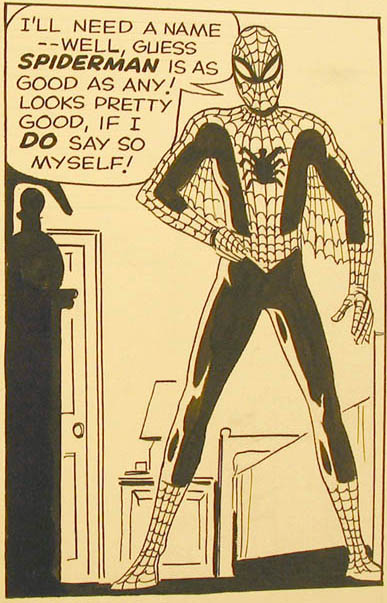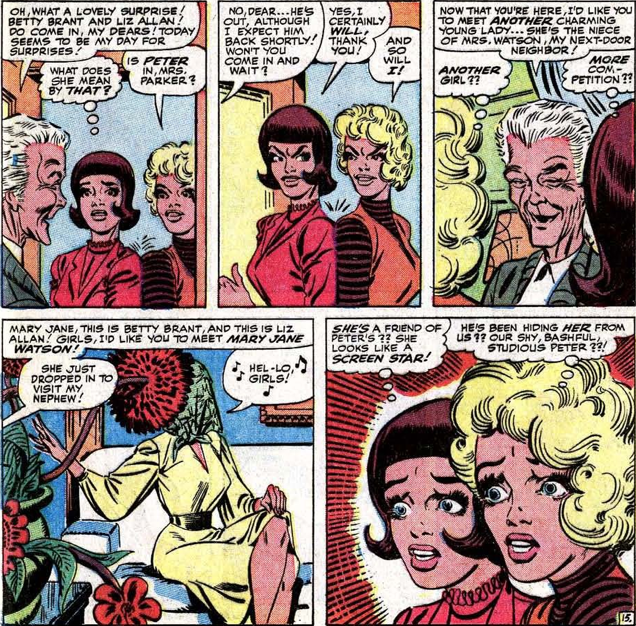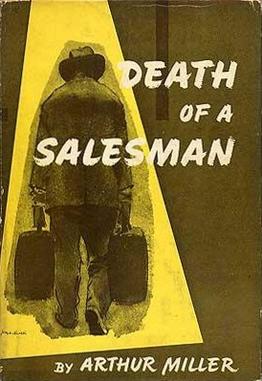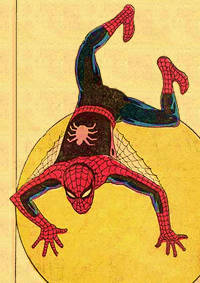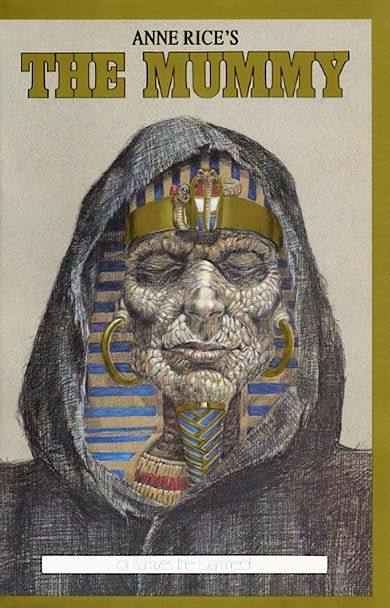I have been playing in White Wolf's World of Darkness for almost 20 years, I was amazed at the complex mythology and Gothic-horror aesthetics, we played Saturday after Saturday and spent hours upon hours debating the finer minutiae of the philosophical implications.
It was until the release of the New World of Darkness and the added perspective of the passing of the years that now, in hindsight, I can finally see the not-so-finer points for what they are. Utter crap.
10) The Daughters of Cacophony and other useless and idiotic bloodlines.
 |
| DeviantArt, what would I do without you? |
Back in the
Vampire Player's Guide, three bloodlines were provided as an example of how Storytellers were encouraged to create their own to add mystery and give a flavor of exoticism, the
Salubri, meant to add a previously unexplained hole in the mythology, the
Samedi, meant to explore vampires around a putrefaction motif and The aforementioned Daughters of Cacophony, built around their discipline,
Melpominee, based on voice powers.
Back from the beginning they were meant to be just examples, as lots of emphasis was placed on the mystery aspect of the game,
Montreal by Night introduced Hengyeyokai and Gaki as examples of mysterious creatures from distant lands but no backstory was given, so players would always be on their guard, as the night was a scary and unknown place.
As years passed and more and more supplements were published, that mystery diluted in an ocean of information. All of the sudden troupes and storytellers had more info to sink their metaphorical teeth in, supplements as the much vilified
Dirty Secrets of the Black Hand gave us the
Nagaraja (flesh eating vampires with necromantic powers) and the
True Brujah (a former clan of emotionless masters of time, whose backstory retconned the fact that The Brujah were a legitimate clan of Caine). Said bloodlines had that "Monster of the Week" flavor, that usually meant that when a new supplement was published a player or a storyteller would feel the utter necessity to use the information contained therein, that usually provided an unrevealed clue, but more often, show that there was nothing planned and authors usually did not check with each other on the metaplot.
The Daughters of Cacophony and the rest of the bloodlines lack exactly what the original seven clans had, a foot in Vampire myth. You could exemplify the original seven with movies (Brujah with
The Lost Boys, Ventrue and Toreador with
Interview with a Vampire...) Bloodlines just didn't feel like vampires at all, just creatures with a cool power.
9) The Malkavian were just an excuse for players to act retarded.
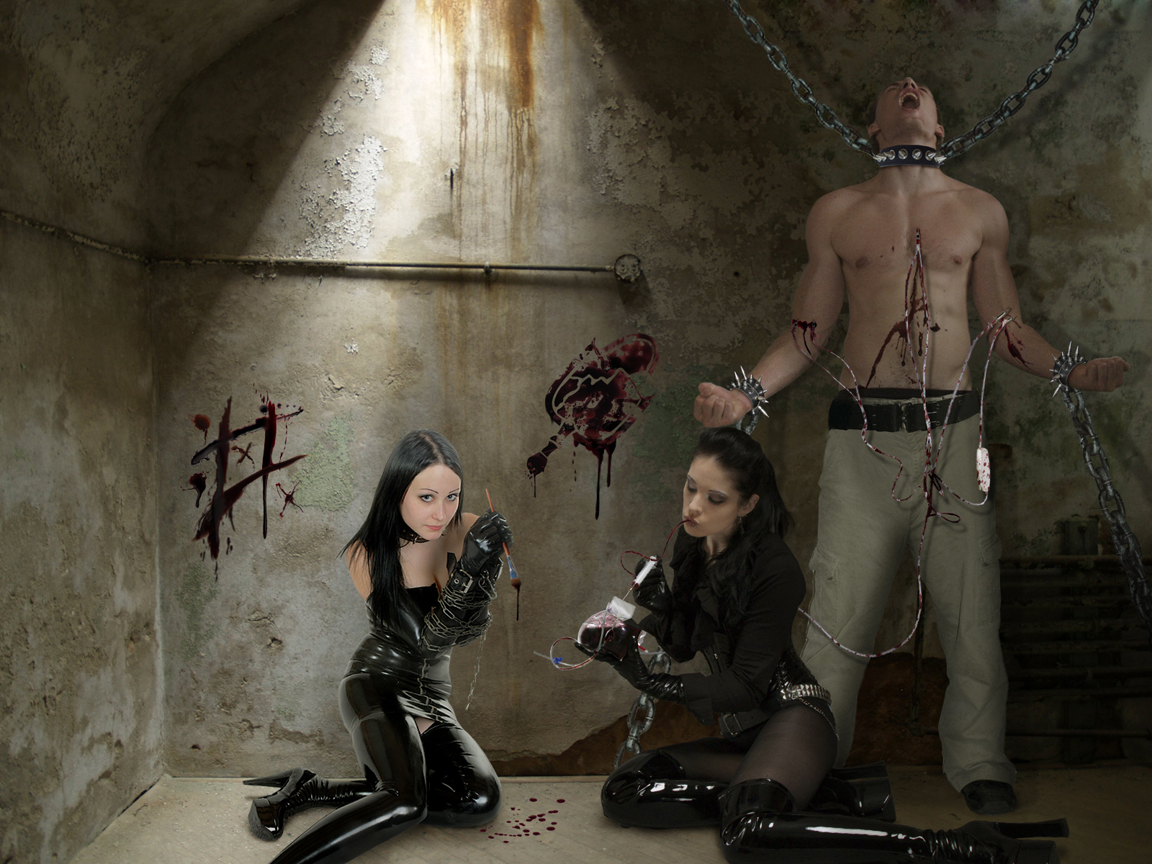 |
| Who's the Malkavian in the picture? The guy being tortured or the girl with the bloody brush and impractical pose? |
The concept of the Malkavian clan is pretty awesome, vampires who are insane, not Angelina Jolie in
Girl, Interrupted crazy, but homicidal maniac axe-wielding crazy, monsters with a very elaborate and incomprehensible method in their madness, truly the predator that would kill you just because the voice in her head happened to speak when you were on your way to the Succubus' Club. In theory they make for great assets in their game, if the Storyteller played one you would never know how to react, that level of uncertainty and danger added a great unpredictable atmosphere to the game.
Sadly, there was simply no guide for players on how to act upon this madness, and they relied on Hollywood stereotypes that quickly deformed into just plain shenanigans and pranks all around.
Instead of helping, the supplements made it worse, the introduction of the Discipline
Dementation in the First Edition
Player's Guide to the Sabbat made not only possible for the Malkavian player to act all crazy, but turn others crazy as well. the 3rd Edition Corebook made Dementation the defacto clan discipline, nonetheless, and
Clanbook: Malkavian, sometimes illustrated with crayons and full of non-sequitur humor made this madness the OFFICIAL way of playing a Malkavian.
A mediocre Malkavian player usually mean that the carefully planned atmosphere would just go away at that player's whim, nothing would stop her from applying her Dementation powers to every Non-Player Character, ruining the storyteller's plans.
8) Kindred of the East is simply impossible to play.
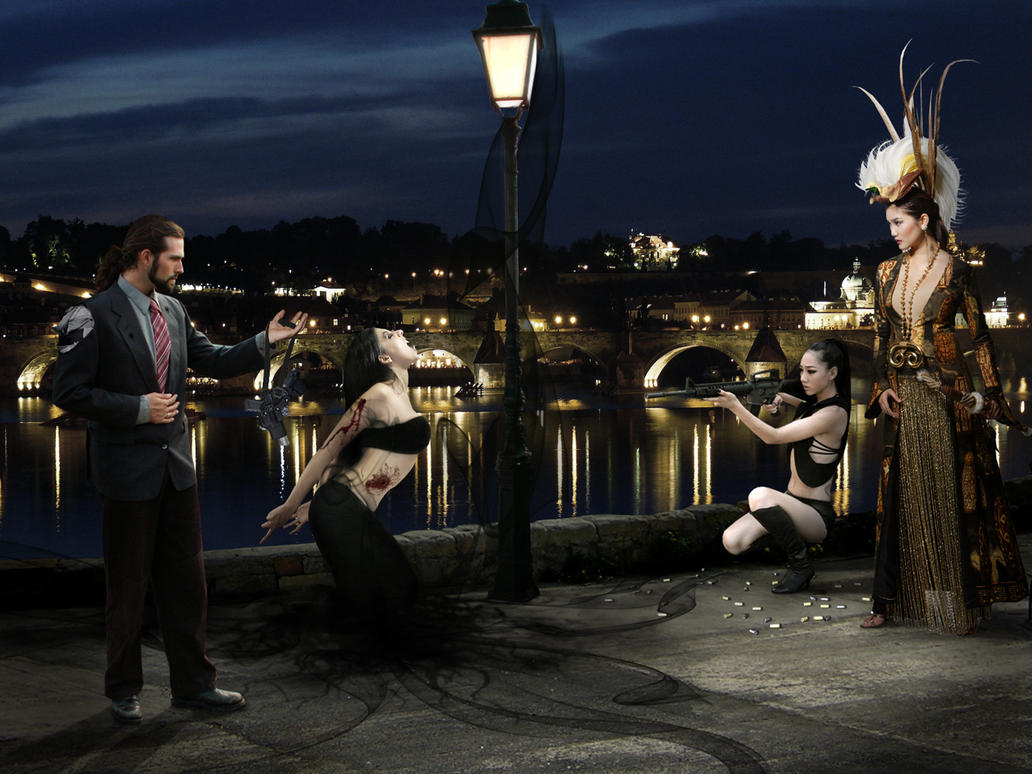 |
| We are Chinese even if you don't please. |
|
Every game had special energy to use and a negative trait, while Vampire had generation, blood pool and Humanity, Kindred of the East had Yin Chi, Yang Chi, Hun, P'o and Demon Chi, you were supposed to act out when you had more Yin Chi by being detached and cold and when you had more Yang Chi by being emotional and angry, and the P'o aspect was something like the beast but with a voice that plotted against you, the Hun was the higher soul, and somehow, in addition to interacting with others, you had to act out this inner struggle.
The supplements didn't help at all, the corebook made the Dharmas (the "clans", but more like paths of enlightenment) look like some pseudoeastern new-agey spirituality bullcrap, while some art made it look like a John Woo action movie while other made it look like anime. The fact that Eastern Culture is virtually unknown and misunderstood by all but enthusiasts and scholars made that players were acting insultingly inaccurate Asian people. The Supplement
Blood and Silk, (Kindred of the East Dark Ages) while delightful to read, was a challenge to play unless you happened to be knowledgeable in the subject or a historian.
7)Weaknesses that weren't.
 |
| Bad Photoshop is not a weakness, but it should be. |
Lasombra don't reflect in mirrors and don't appear in surveillance equipment and can't be photographed. No, that's not a superpower, that was supposed to be their weakness. Weaknesses were supposed to add a frailty to the character, something that reminded the character of the curse of Caine. In real gameplay, they were either underplayed, ignored o used as an excuse to annoy a particular player. Tremere really didn't have any weakness, just be careful when they were around their elders and they lived in Vienna, Brujah were quick to frenzy but that never really bothered anyone, Giovanni dealt double damage with their bites but as utter inhuman monsters they couldn't care less.
Usually this meant that the newbie who chose a Ventrue would be in the receiving end of the stick, as the prey exclusion weakness is one of the few that really impair the character.
6) Both Vampire: The Masquerade and Demon: The Fallen implied that Christianity is true and all other religious worldviews wrong.
 |
| Even though Leviathan is a sea creature. #fail |
As
Mage: The Ascension is a postmodernist wet dream where all paradigms and origin myths happened, the opposite is true for
Vampire: The Masquerade, the first game had a Gothic romance quality to it, vampires are cursed by God and are the progeny of Caine, who slew his brother out of love, not jealousy, and since then he has been damned to drink blood and eat ashes. That makes for great stories with a unique feel, a post-Byronian antiheroica.
However, when the following gamelines appeared and tried to cram everything in a shared universe this idea appeared more and more ludicrous, how does the biblical story of Caine match with the Wyld-Weaver-Wyrm cosmology? With the the postmodern porn of
Mage: The Ascension?
The mystery aspect of Vampire is somehow diluted when there are ancient vampires crawling around, talking about elders who lived in the City of Nod and who personally met the Children of Caine, everything is worse when Caine himself appears in the Gehenna supplement, and every story addresses that story as true.
Only two supplements,
Kindred of the Ebony Kingdom and
Clanbook: Followers of Set Revised, offers an alternative creation myth, but it's quickly dismissed as an alternative interpretation of the same. Part of the appeal of
Demon: The Fallen is that the player characters were actually there when everything was created by the God of Abraham. If we have beings who have actual evidence of the seven days of creation and who can corroborate all the stories in the Bible, why are there non-Abrahmic religions? The in-universe explanations are naïve and shortsighted at best, even worse, there shouldn't be non-Christian vampires.
This faux-pas were one of the first things that
Vampire:The Requiem set right, no generations tracing back to Caine and there are different sects with wildly different creation myths who do not see eye-to-eye, restoring a sense of mystery to the atmosphere.
The Masquerade is Christian,
the Requiem is Agnostic.
5) Coming to think of it, The Technocracy was right all the time in Mage: The Ascension
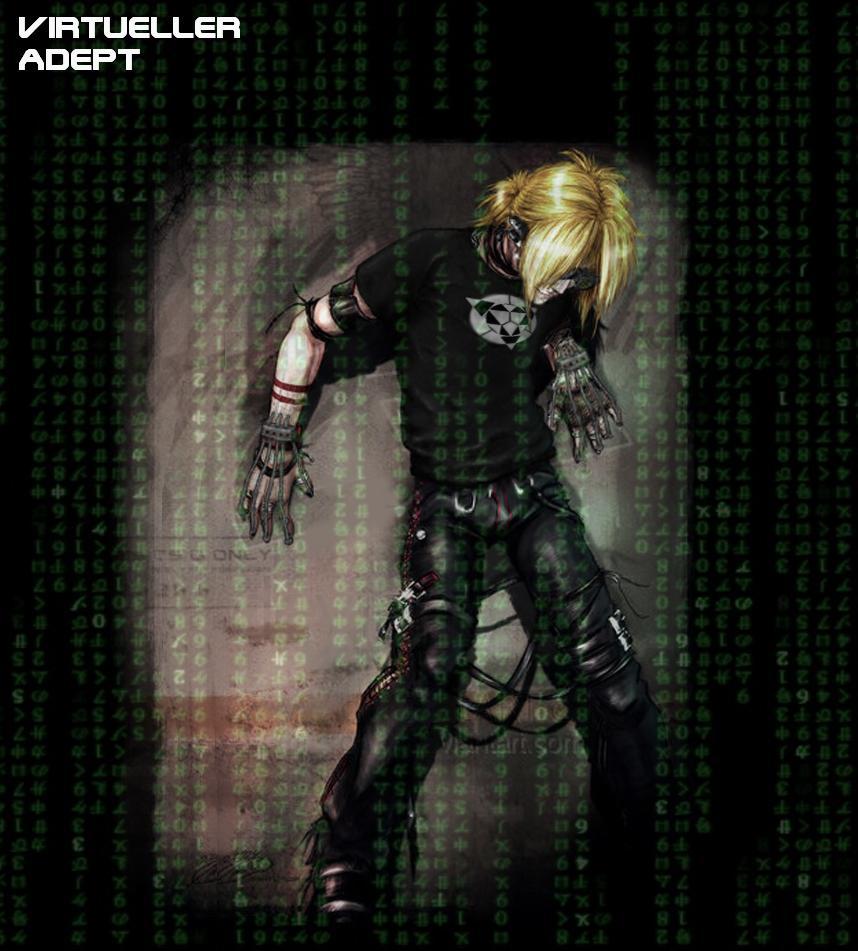 |
| Now with 20% more straps |
Mage:
The Ascension has the best magic system ever. Period. No bulky
spellbooks, no components for rituals, basically, you had your
particular flavor of magic, your preferred focus, your paradigm. The
cosmology was really interesting and it predated The Matrix for many
years, basically, you shaped reality and reality had a tendency to
dislike being shaped, hence the backlash called Paradox.
The
traditions each had a very distinct flavor and any player could easily
get the feel of how tradition specific paradigms worked, not only spell
based magic and conjuring from the Order or Hermes or martial arts and
eastern mysticism from the Akashic Brotherhood, but mad science fiction
contraptions from the Sons of Aether and virtual reality and cyberspace
from the Virtual Adepts, magic was an easy comcept to grasp and a
wonderland to explore and master.
Enter the designated
villains, the Technocracy; who had a static and cold vision on how
Reality should be shaped, no room for the old magic and conjuring.
Basically, they wanted to exterminate all fantasy and superstition from
the world.
Then again, why is that a bad thing? The
message in the first two editions of Mage seemed to embrace superstition
and magical thinking as more valid than science and critical thinking,
the basic premise, that reality depends on observation and is formed by a
consensus, is postmodernist bullcrap, how can two persons which
worldviews are radically different be able to work together? Later
editions entered conflict between traditions, but that only exacerbates
the problem. It takes a lot of cognitive dissonance to work with someone
who heals through the now debunked model of humor imbalance while you
believe that sickness is caused by the sins of the flesh, at least the
Technocratic Union had a unified and non conflicting worldview.
The
Technocracy had the cyborgs (Iteration X), the bionic implants, the
clones (Progenitors), the holograms and the mind enhancing drugs (NWO)
finance and money (The Syndicate), but most important of all, the
spaceships!!! (Void Engineers), why did the alleged villains have all
the cool stuff while the traditions had herbs and dancing?
Later
supplements appointed the Technocracy as the ones who defended reality
against the Nephandi (Devil worshipping mages) and Marauders (chaotic
deranged mages) and little by little they began portraying them in a
positive light, culminating in
Technocracy: A Player's Guide, and in
Mage: The Sorcerer's Crusade,
the Fathers of the Technocratic Union; The Order of Reason, was
portrayed not only positively, but as heroic in their own right.
4) This Guy
 |
| Guess my decade!!! |
"Crossover" characters are the wet cream of power players, the ones who play not to tell a story, but to win points like in a videogame. The same old story, in
D&D you could go into the forest to slay squirrels and get experience points in order to level up and get more spells.
It was the supplement
Under a Blood Red Moon for
Werewolf: The Apocalypse that introduced the concept of Abominations; vampire werewolves. In such supplement they were meant to instill a sense of dread and tragedy, they are even described as
forever alone.
The same supplement discourages players from creating one, albeit powerful they have the worst of both worlds. they cannot regenerate (this is the first thing that power players choose to ignore), can't regain gnosis, are attacked on sight by spirits, cannot learn new gifts and are hopelessly blood bound to sadistic and deranged masters.
Enter
The Chaos Factor , a supplement for
Mage: The Ascension with an epic scope. a crossover blockbuster that introduced a new and powerful villain that would prove to be a challenge to all the published games, a villain that would join vampires, mages and werewolves together, Samuel Haight, a very powerful ghoul with vampire powers, werewolf powers and access to both sorcery and true magic. Not only did he have none of the disadvantages of abominations, but none of the weaknesses. The real issue was that all the themes and moods of the original games were subverted for a shoot 'em up scenario, no introspection, no personal horror, just search and destroy.
This was said about him in the White Wolf forums;
In short, he is the written representation of almost everything wrong with
the bad gamers out there that make the hobby so painful for us on
occasion. He is one man, who wanted every 'kwel powerz' he could get,
for no other reason than his misanthropic desire for revenge against a
society for no other reason than they were not the society he wanted.
---Operations
The attempt to create a memorable villain resulted in a failed experiment, crossovers rob the charm of the individual lines rather than enrich them and scenarios such as this, while tangentially appropriate for
Werewolf: The Apocalypse seemed strange and forced in the other lines.
You simply cannot have a game for mature players that indulges in teenage angst-ridden Liefieldian fantasies.
3) Werewolf: The Apocalypse is basically a caricature of both environmentalists and religious fundamentalists.
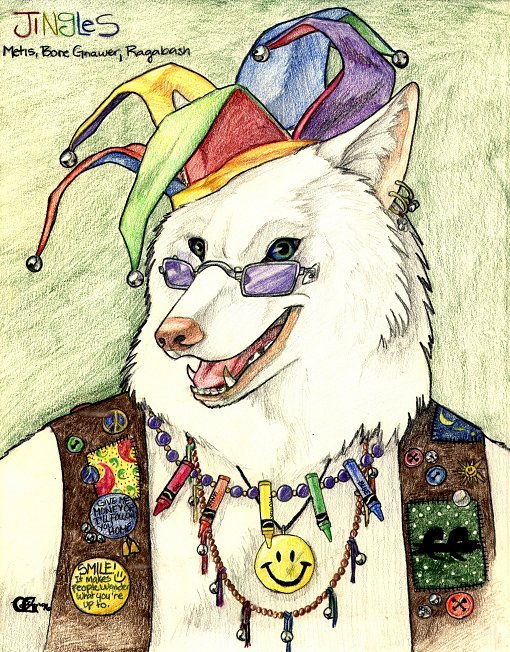 |
| Level 2 Ragabash gift: Floating glasses |
Werewolf: The Apocalypse was a very unfortunate follow-up to
Vampire:The Masquerade, while the whole personal horror embodied by the phrase
Monsters we are, lest monsters we become made possible for tales of shades of grey morality and question what being human is,
W:tA lived in a comic-book moral-absolutist Manichean
if you are not with me you are against me world, there were card-carrying bad guys, an invisible force of corruption that tainted the world of man; the
Wyrm, who not only had deformed monstruous lackeys like the
Fomori and the fallen tribe
The Black Spiral Dancers, but also human agents from
Pentex International, a multinational corporation built upon the worst assumptions of environmentalists.
Players
were champions of Mother Earth; Gaia, the wet dream of Greenpeace,
PETA and extreme environmentalist ecoterrorist groups, who were severely
overpowered compared to other denizens of the World of Darkness. The
values upheld by players were of communion with creatures of the
Wyld, animal totems and an amalgam of several native spiritual myths.
To play
Werewolf is
basically to play someone who sees corruption in the world of man and
protects Mother Earth, who fights the metaphorical tooth and claw to get
rid of such evil, that is what it has in common with fundamentalists,
they would love to go around the world simply destroying corruption in
order to lead into salvation. Religious zealots see the Devil everywhere
just as werewolves see the
Wyrm everywhere (The supplement
Chronicle of the Black Labyrinth would even divide The Black Spiral, the incarnation of the
Wyrm, into nine circles just like the Dantean Hell).
2) Dirty Secrets of the Black Hand
The Tzimisce discipline of Vicissitude, basically flesh-crafting, is a mutant dimensional virus from outer space that transforms vampires into Gigerean monstrosities.
No, really.
Conspiracy theories make for very fun fictional worlds and engaging games, the puppeteer in the shadows, the power behind the power, that is the true spirit of the masquerade, intrigue, backstabbing,
carpe noctem, Anne Ricean romance.
But this book quickly spirals into aluminum foil, Lady Gaga Illuminati, reptilians from Jupiter, antifluoridation madness within the first pages. This is all about the Black Hand, no, not the internal affair secret police of the Sabbat, but the Talma'hera, a super secret stake-my-heart-and-hope-to-die society who secretly controls those who believe that secretly control the world.
Where to begin? They are ancient, they live in a castle only accessible trough dimensional travel, they have members within every vampiric society, they fight alien monsters... Suddenly this doesn't feel like Vampire at all. and the new bloodlines, the "True" Brujah, yes, because the Brujah we came to love from the originals are now impostors, surprise! and they have this ultra l33t power, actually, they have the sphere of Time, yes, they have true magic and do not suffer paradox backlash, why, their lvl. 3 discipline allows them to accelerate and slow time, yes, they can move a superspeed and make others as slow as drying paint. The Old Clan Tzimisce are bland and boring and the Nagaraja are nothing special, they can see ghosts and their weakness is that they must eat raw meat. Meh.
And how can I forget, the book includes systems to make an elder vampire with 10 discipline powers instead of the usual 3. This book is
plot cancer, if you introduce the ideas put inside your chronicle will quickly degenerate into some über-powered dark fantasy and there is no chance it can go back ever again.
1) Mummy, the Resurrection.
Little known fact: The second supernatural creature to be playable in the Classic World of Darkness wasn't Werewolf, it was Mummy.
If you enter the mindset of the original Gothic Anne-Rice inspired atmosphere werewolves feel unnatural and crude compared to the sheer elegance of ancient creatures of the night. Anne Rice already touched the Egyptian myths in
Queen of the Damned, why not go back to her for additional inspiration?
The Mummy in the Anne Rice novel is an immortal who is also bound by powerful passions, who has seen empires rise and fall. It is also damned, not in the same way as a vampire, but in its own unique way.
However, there was only one
Mummy novel, and as well, there have only been four Mummy sourcebooks,
Mummy; First Edition,
World of Darkness: Mummy Second Edition,
Mummy: The Resurrection (3rd Ed.) and
Mummy: The Resurrection Player's Guide. The first three are attempts to make it work. The third edition gained new life because of the 1999 Universal movie, but there the Mummy was the antagonist and it had more in common with H. Rider Haggard's adventure novels than with Anne Rice.
The real problem was that, mechanicallu, it was just too cumbersome, Second edition introduces three new virtues: Memory, Integrity and Joy and three new traits, Sekhem, the "magic reservoir" trait, Ba the "vitality" and Ka, the "not really sure but it has to do with Egyptian cosmovision"trait. Just as Kindred of the East, Mummy demands knowledge on how the Ancient Egyptians conceived death and the soul, traits were either too vague and difficult to track.
The Mummy The Resurrection Player's Guide introduced, at long last, the Incan and Chinese mummies, however, the difference between Intimallki and Pachamallki wasn't as clear, the Wu Fen and Xian Lung are bland and uninteresting. A mistake pretty prevalent in supplements that try to detail an exotic culture is paint an oversimplified picture that fails to grasp the complexities and relies too heavily in pop culture stereotypes. However there had been supplements that do it marvelously;
Veil of Night, for
Vampire: The Dark Ages, gives a detailed and complex view of the Kindred of the Medieval Islamic World, while preserving an air of exoticism and mystery and escaping from half chewed
Arabian Nights references.
Mummy has a fatal flaw, it's simply not sexy enough, while the rest of the lines provide great opportunity for drama and action Mummies are simply not damaged enough, the don't suffer enough, they can't be emo the same way as vampires or demons, the theme of immortality is better explored in Vampire: The Masquerade, ancient mysteries are explored endlessly in
Mage: The Ascension. At the end of the day mummies are neither Byronic nor Wagnerian.
White Wolf has announced a New World of Darkness version of Mummy to be released in August 2012, let's see if the fourth iteration is the one to hit gold.
Coming soon: The 10 Best oWoD supplements.






